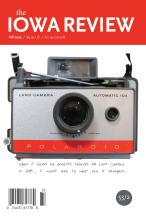
In Carlo Matos's stunning third book of poetry, Big Bad Asterisk, readers will find "science projects," Jeopardy matches, and "the blood of princes." It is Matos's ability to seamlessly weave together vastly different points of view that makes his work so compelling. Presented as an ongoing series of annotated prose pieces, much of the work in this formally inventive collection reads as a conversation between different characters, as well as a dialogue between different facets of consciousness. For Matos, all writing, thinking, and living is a collaborative act, an idea that is gracefully enacted in the form of the poems themselves.
With that in mind, Matos's use of formal citations is especially noteworthy. Frequently using annotations to problematize the main text, rather than to explain or clarify its meaning, he presents an innovative text that privileges process over product. Matos envisions writing as a practice in which hypotheses are tested, observations about the world are called into question, and eventually refined, perfected. It is through the presentation of multiple points of view, both in the world and within the self, that we come closer to the truth. Consider this passage:
They needed someone who punished without judgment, who served the moment, and staked the next round.*
*A recent study concluded that although there had been a drastic increase in references to copulation with farm animals in popular media, actual incidence of the fact had been in steep decline since the late 1800s.
Here Matos juxtaposes everyday speech with the rhetoric of science and weighs the two perspectives against one another. His work is at its best when disparate voices, points of view, and epistemologies are presented as coeval, and the reader is allowed to glean insights from all, while committing to none. It is through this presentation of myriad perspectives without strict adherence to a single worldview that Matos suggests we gain the greatest insight. The dialogic form of the work enacts this very idea, as the reader is asked to sort through science, myth, and popular culture, taking with her the most valuable for her purposes.
By making such demands on the reader, the poems in Big Bad Asterisk re-envision the relationship between artist and audience in a way that is both provocative and compelling. Rather than imagining the author as one who gives meaning to an audience that passively receives it, Matos allows the audience to participate actively in making meaning from the text. Since he asks his reader to discern between vastly different perspectives, worldviews, and rhetorics, it is really the audience who actualizes the literary text. Matos writes, "The term 'chapter' is to be used loosely. This may in fact be the world's longest nano narrative, flash fiction piece, short short story or prose poem." In passages like this one, Matos suggests that the book expands or contracts with the reader's imagination, becoming as complex or as concise as they allow it to be. The dialogic form of the narrative allows for these myriad possibilities, as various parts of the text illuminate and complicate one another.
Lastly, Matos's ability to weave together disparate narrative strands proves impressive as the book unfolds. Big Bad Asterisk presents several distinct plots, which occur simultaneously, unfolding both in the main text and its annotations. These various narrative strands, at turns scientific, fictional, and humorous, call for a similarly active mindset on the part of the reader. Indeed, Matos asks us to discern not only which part of the text was intended as the focal point, but whether there is such a thing as a "main text." He presents all writing as an intersection of vastly different points of view, modes of cognition, and forms of knowledge. He explains,
It didn't seem to matter if the houses were triumphs of domestic bliss or bohemian art pads, they were in plain sight and going unnoticed. If this were a Renaissance painting, their souls would have most certainly been forced out by now. That must be now way to go, through the nose.
Matos shows us how history, art, and mythology intersect in the most everyday things, including suburban houses and "bohemian art pads." To render the world around us, or even our innermost thoughts, one must draw from a variety of perspectives. The poems in Big Bad Asterisk reveal this multiplicity as a source of profound insight, which is presented with humor and grace throughout. Matos's new book is a truly wonderful follow-up to his previous two collections (Counting Sheep Till Doomsday and A School for Fishermen), and a worthy addition to any poetry enthusiast's library.
Kristina Marie Darling is the author of thirteen books, which include Melancholia (An Essay) (Ravenna Press, 2012), Petrarchan (BlazeVOX Books, 2013), and (with Carol Guess) X Marks the Dress: A Registry (Gold Wake Press, 2013). Her awards include fellowships from Yaddo, the Helene Wurlitzer Foundation, and the Hawthornden Castle International Retreat for Writers, as well as grants from the Kittredge Fund and the Elizabeth George Foundation. She is currently working toward a Ph.D. in Poetics at S.U.N.Y.-Buffalo.
Big Bad Asterisk
Carlo Matos
BlazeVOX Books, December 2012
$16 paperback, ISBN: 1609641191
120 pp.

